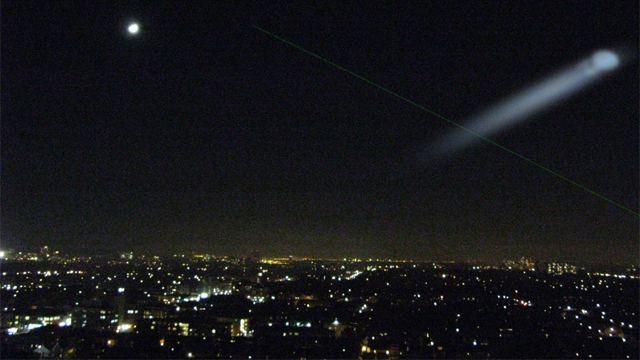This happens with some bright stars on occasion, like Sirius. In fact, when I was a teenager, I had the personal experience of walking outside one night, looking up and seeing a brilliant, flickering prismatic apparition that I swore I'd never seen before. It took me some time to figure out that it was merely the brightest star in the night sky and it was supposed to look that way! I always think back to this experience when listening to your descriptions of the fantastic and strange things you've seen in the sky.
By the way, stars twinkle, planets don't (much). That's another way to tell them apart, other than consulting an app on your smart phone.
What about things that move--that is, with speed and direction different from normal "diurnal" motion (motion caused by Earth's rotation)? When you observe something moving, relative to the background stars or horizon, there are generally three (mundane) things it is likely to be: an aircraft, a spacecraft, or a meteor/meteorite.
Spacecraft (let's start with artificial satellites, the International Space Station, and in times of yore the Space Shuttle) can appear to move like a plane, but with the defining feature that they are always a single point of white light. Depending on how far from Earth they orbit they will move at different paces (just like aircraft at different altitudes), but since they are at least 150-200 miles above Earth's surface, they're too small to be seen as anything more than a point of light. And as the light they shine is actually reflected sunlight, they will be white. Some of them may flash, or pulse, as reflective surfaces like solar panels turn in the sunlight. Also, because they are in orbit in a ballistic trajectory, you won't be seeing them change direction.
An aircraft—or more correctly, at night, an aircraft's wing and fuselage lights—can appear as more than a single point of light, and these lights can bear color. Typical aircraft (commercial and private alike) have a lighting configuration in common: green for starboard, red for port, and blinking white at wingtips, tailtop, and tailtip. And if they're heading directly at you with their landing lights on, they may appear to flare up and barely move at all.
The shape the wing and fuselage-lights form (what kind of triangle or diamond they make) depends on the style of aircraft (where the wingtips are relative to the tail, etc.), but I'd say green, red, and flashing white are a dead giveaway for an airplane (or a flying saucer trying to look like one.)
Military aircraft can look unusual, depending on what they are and what kind of maneuvers they're on. They can even fly without lights on at all. In Flagstaff, Arizona, I once saw a simple triangle of steady, white lights fly over and have always assumed it was a stealth fighter on night maneuvers.
Meteors and meteorites (bits of interplanetary metal and rock that burn up in our atmosphere, or that are large enough to hit the ground before burning up completely, respectively) also have their hallmark behaviors and appearances.
Fainter ones will appear white, while brighter ones can show some color—blue, green, orange, depending on their composition and how hot they get. Most leave smooth, straight streaks, but some can exhibit "flame-like" raggedness, like long luminous gashes in the night. Some can even explode. But all of them move very fast, lasting only a couple seconds or typically less, yet crossing a good portion of sky in the process. You'll only see an airplane moving that fast if it passes thirty feet over your head.
If none of this helps you sort out what you've seen aloft, try this chart. And remember, if you're not sure what it is, it doesn't hurt to smile and make no aggressive moves….

